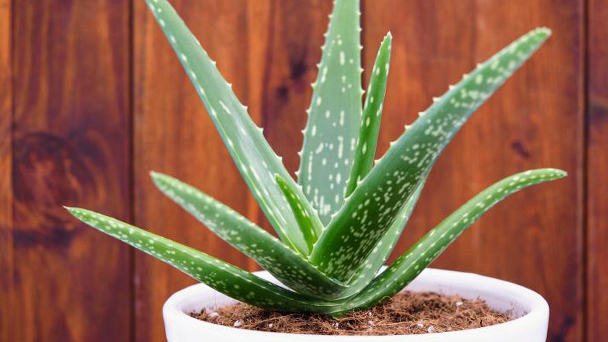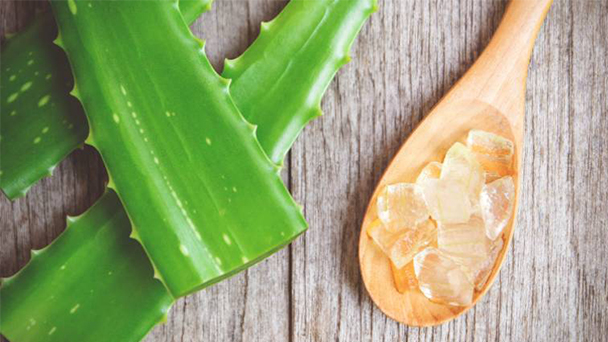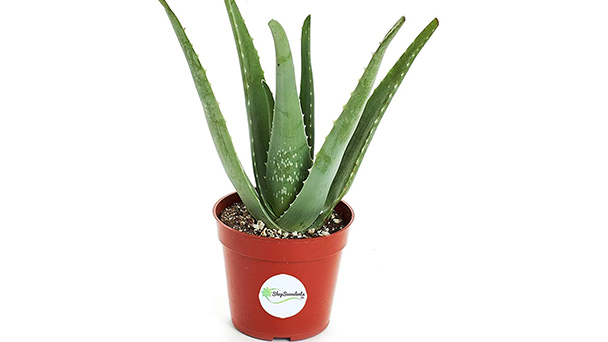Aloe Profile
Written by Joy
Sep 09 2021

Aloe is a perennial evergreen plant of the order Liliaceae and Liliaceae, also known as Aloe Curaçao, Chinese Aloe, Scallion, Aloe Vera, Green Leaf Aloe, American Aloe, etc.
The leaves are clustered, large and thick, and are seated or born on the top of the stem. The leaves are often lanceolate or short and wide, with pointed thorns on the edges. The inflorescence is umbellate, raceme, spike, conical, etc., with red, yellow, or red spots, six petals and six pistils. The perianth base is connected into a tube.
The leaves are clustered, large and thick, and are seated or born on the top of the stem. The leaves are often lanceolate or short and wide, with pointed thorns on the edges. The inflorescence is umbellate, raceme, spike, conical, etc., with red, yellow, or red spots, six petals and six pistils. The perianth base is connected into a tube.
Aloe morphological characteristicsAloe growth habit1. Soil2. Light3. Temperature4. Moisture5. Ecological environment6. Need nitrogen, phosphorus and potassium,and trace elements.Aloe growing environment and distributionAloe efficacy and roleEdible valueHealth valueAnti-AgingPromote healingStrong heart and blood circulationImmunity and regenerationBeauty valueAloe cultivation
Aloe morphological characteristics
Aloe is evergreen, belonging to succulent herb. The stem is shorter. The leaves are nearly clustered or slightly two rows (young plants), thick and juicy, strip-lanceolate, pink-green, 15-35 cm long, 4-5 cm wide at the base, with several small teeth on the top, and sparse spiny edges small teeth. Scape is 60-90 cm high, unbranched or sometimes slightly branched and raceme with dozens of flowers.Aloe growth habit
1. Soil
Aloe vera has good water permeability, high organic matter content, and pH value between 6.5 and 7.2.2. Light
It likes light, endure half shade, avoid direct sunlight and excessive shade.3. Temperature
The suitable growth environment temperature is 20-30 ℃, and the best temperature at night is 14-17 ℃. The growth is basically stopped when the temperature is lower than 10 ℃, and the leaf flesh of aloe vera will wilt and die when frozen.4. Moisture
Aloe has a strong ability to resist drought, and the aloe that is off the soil can stay dry for several months. Aloe vera needs sufficient water during its growth period, but it is not tolerant to waterlogging.5. Ecological environment
The ecological environment (air, water, soil, etc.) of aloe vera should not be polluted, so you ought to pay attention to ventilation.6. Need nitrogen, phosphorus and potassium,and trace elements.
To ensure that aloe vera is a green natural plant, you'd better try to use fermented organic fertilizer, cake fertilizer, chicken manure, and compost. Earthworm manure is more suitable for growing aloe.Aloe growing environment and distribution
Aloe vera is native to tropical arid regions of Africa and is distributed almost all over the world. Wild aloes are distributed in India and Malaysia, the African continent and tropical regions. There are at least 300 wild species of aloe, among which there are about 250 species in Africa, about 40 species in Madagascar, and the remaining 10 species are distributed in Arabia and other places.Aloe efficacy and role
Edible value
As early as 1918, the US Food and Drug Administration confirmed that Aloe vera (Aloe vera) is edible.Health value
Aloe contains 75 kinds of elements, which are almost completely consistent with the substances required by human cells. It has obvious health care value and is honored as a magic plant and family medicine box.Anti-Aging
The mucin (protein) in Aloe vera is based on arboran A Baloe mannanaloetin and other polysaccharides as its core components. Mucus substances are important components to prevent cell aging and treat chronic allergies. In addition, mucin has the effect of strengthening the body and strengthening the essence.Promote healing
Aloe juice preparations have protective effects on skin wounds, burns and local X-ray irradiation.Strong heart and blood circulation
The calcium isocitrate in aloe vera can strengthen the heart, promote blood circulation, soften hardened arteries, reduce cholesterol content, expand capillaries, make blood circulation unblocked, and reduce cholesterol levels.Immunity and regeneration
Aloin A, trauma hormone and glycan peptide mannose (Ke-2) have anti-viral infection and promote wound healing and recovery.Beauty value
The polysaccharides and vitamins contained in aloe have good nutrition, nourishment and whitening effects on human skin. It also relieves hardening, keratosis, and improves scars. It not only prevents small wrinkles, eye bags, and sagging skin, but also keeps the skin moist and tender. It is also effective for hair, keeping hair moist and smooth and preventing hair loss.Aloe cultivation
Aloe vera loves temperature and is afraid of the cold. When the temperature drops to 15°C, it stops growing and begins to die when it drops below 0°C. Aloe vera is a tropical and subtropical light-loving plant, and its growth requires sufficient sunlight and air. Aloe vera is suitable for growing in sandy soil with strong air permeability and good water permeability. It does not require much fertilizer. It mainly uses organic fertilizer and supplemented by trace element fertilizer. First, prepare a mother plant of aloe in a good growth state, cut some side buds with roots from its base, and set aside to dry the cut. Then prepare some flower soil with higher nutrient content and better drainage capacity, put it in a pot with better permeability, and dig a small hole on the soil surface to plant the side buds in it. Then put it in half shade and wait for it to take root.
Latest Updated
- Benefits of Bugleweed - 7 Science-backed Health Benefits
- Bugleweed Dangers & Side Effects - Is It Poisonous?
- How to Plant Evergreen Trees - What You Should Know
- When to Plant Evergreens - Grow Guide for Evergreen Trees
- 12 Wonderful Evergreen Shrubs for Your Garden
- 12 Popular Evergreen Plants with Pictures for Beginners
- When And How To Prune A Lilac Bush Like a Pro
- How to Grow & Care for Lilac Vine (Hardenbergia Violacea)
- Japanese Lilac Tree (Syringa Reticulata) Care & Propagation Guide
- Shumard Oak Pros and Cons - What to Know
Popular Articles
- Winter maintenance of Antirrhinum Majus
- How to Grow Terminalia Mantaly Tree
- How to Grow and Care for Crossostephium Chinense
- How to grow Antirrhinum Majus in spring
- Peristeria Elata (Dove Orchid) Profile: Info & Care Guide
- Underwatered Snake Plant (Sansevieria Trifasciata) - Signs And How To Fix
- How to Care for Brazilian Jasmine Plant (Mandevilla Sanderi)
- How to Grow & Care for Graptopetalum Purple Delight in Summer
- Rosa Chinensis (China Rose): Plant Growing & Care Tips
- How to Care for Baby Sun Rose (Aptenia Cordifolia)

